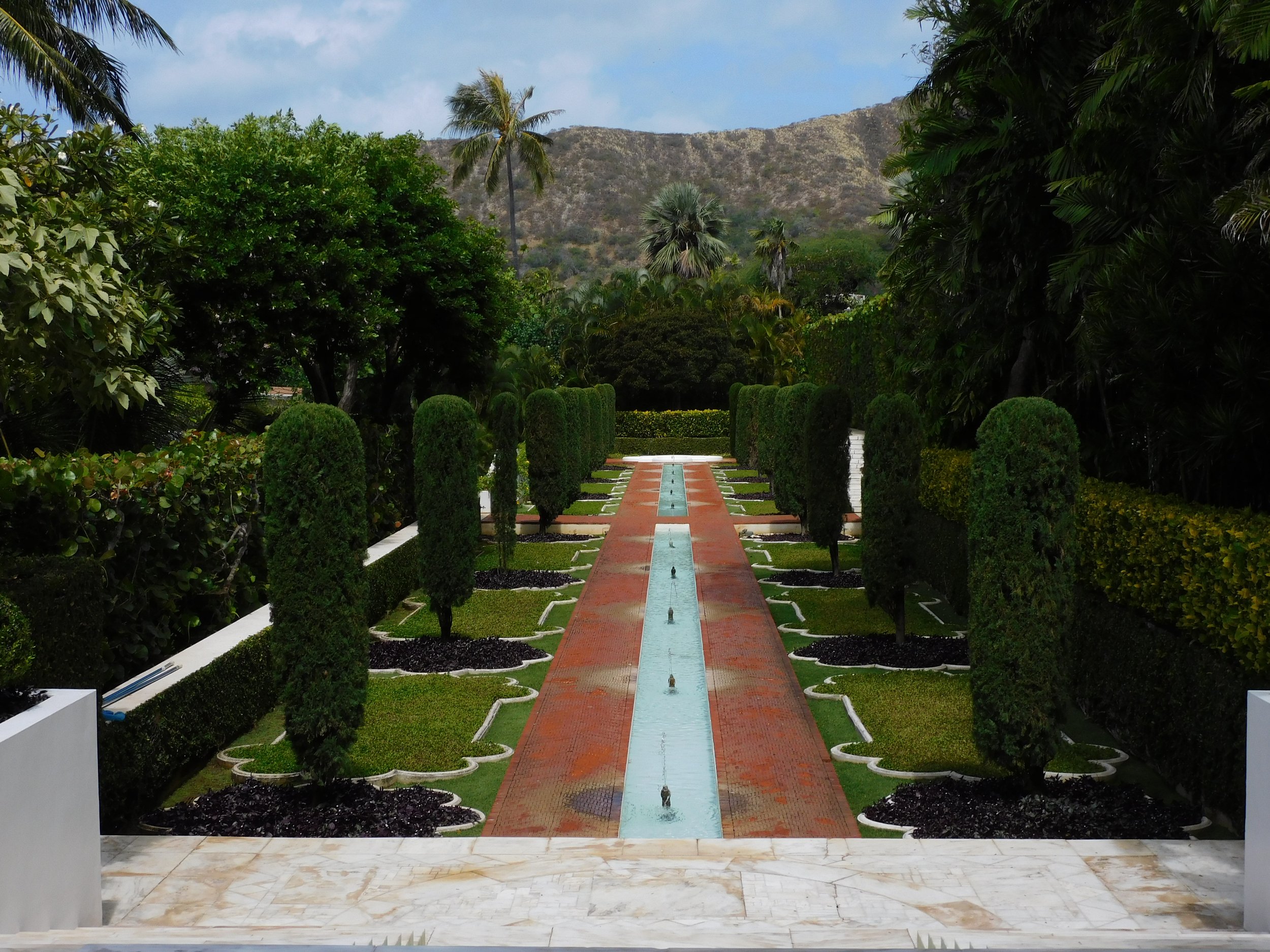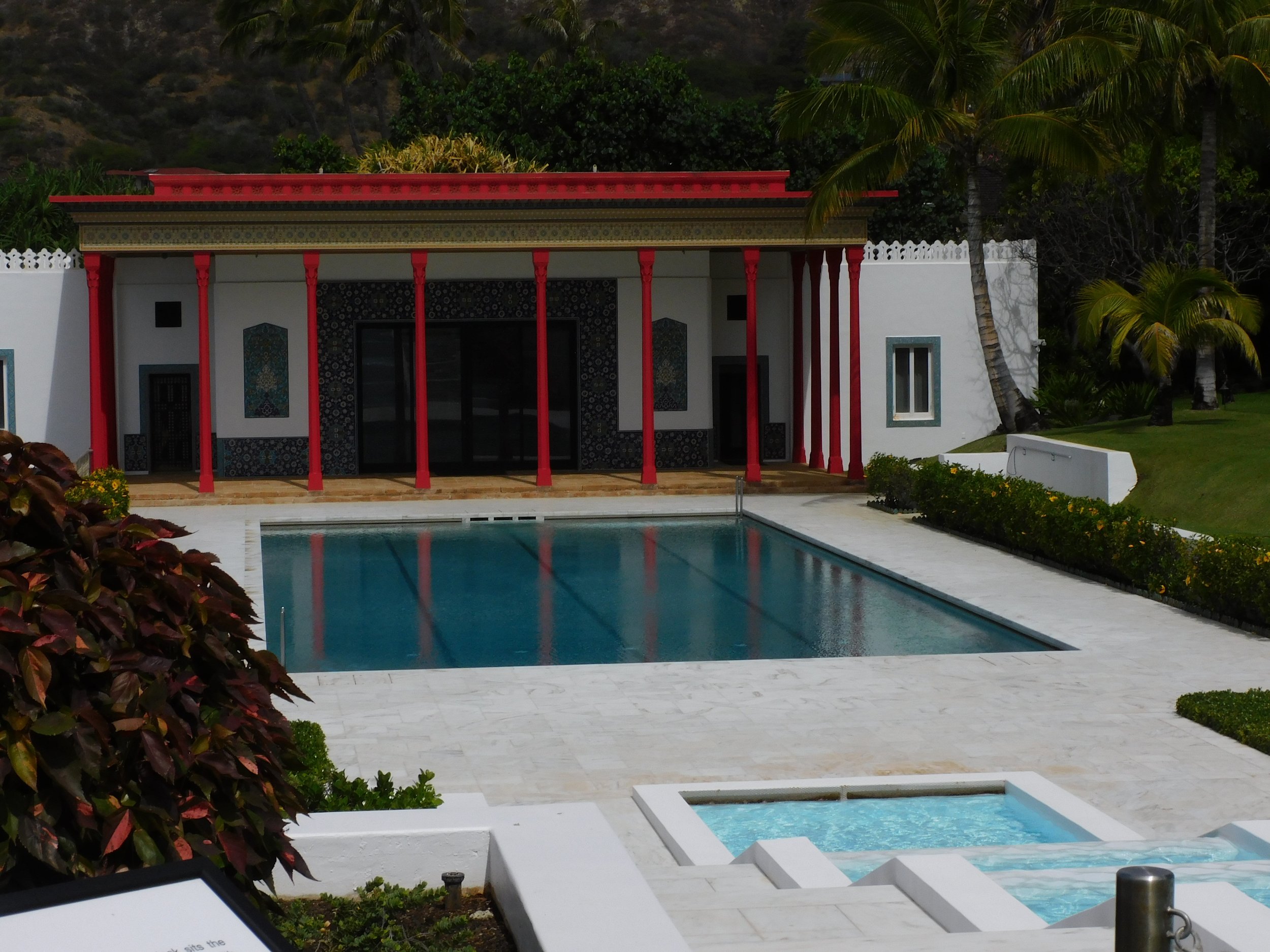Shangri-La Islamic Museum of Art & Design
Shangri La is the only standalone Islamic art museum in the United States, and it’s located in Oahu, Hawai’i.
I originally wrote about Shangri-La in my original Hawai’i travel post, but my family loved it so much that I felt like briefly mentioning it would do such a massive injustice. Before we dive into the nitty gritty behind what it takes to wander around this beautiful estate, let’s go over the basics.
Doris Duke loved Islamic art, so she dedicated her estate to gathering works from all over the broader Islamic World.
Shangri-La is the former home of tobacco billionaire heiress Doris Duke, who, in her time, was one of the richest people in the world. She’s an absolutely fascinating person so I highly recommend reading up on her regardless of whether you visit Shangri La or not.
During her lifetime she traveled to South Asia and the Middle East extensively, collecting art wherever she went. The museum, as you enter it, is dedicated to the Broader Islamic World, so items in there will not be exclusively from the SWANA/MENA region. At we entered, there were objects from Africa and Indonesia, which host large populations of Muslims but also they held influences artistically whether the population or maker was Muslim or not.
Now, as I’ll get into later, there are some questionable items located inside the museum in terms of ethics, but Duke paid millions of dollars in 1930s currency to acquire a lot of the items in this museum. It is indeed her former home revamped into a museum, so you’re wandering the same exact halls she would have parties or lounge around in.
She bought the lot in Hawai’i and developed the estate from the ground up, and this neighborhood as a whole seemed very wealthy—the guy behind us on the bus was Googling the values of the houses around here and they were in the millions, spiking higher and higher as you got closer to the water.
When Duke died, she turned this home and her artifacts into the Doris Duke Foundation for Islamic Art, and you can do an artist residency here, academic research, and they host events around the estate. It’s not that big of a piece of land if you’ve been to, for example, Hillwood in Washington D.C. (which boasts an impressive amount of Russian artifacts from the Tsars, pilfered to Merriweather-Post after the Soviets took over).
If you can get tickets, Shangri La is something you must visit during your trip to Honolulu.
Shangri La is a part of the Honolulu Museum of Art; the fee you pay to get into Shangri La means that you can also get into the HoMA for free. My family is not full of art people and we had a packed itinerary, so, much to my disappointment, we did not get to wander the HoMA for long. They do have extensive collection of Polynesian and East Asian art, so if you’re into those modes of artistic styles, I recommend visiting in tandem with the Bishop Museum.
Due to COVID-19, when we went, Shangri La was limiting its tours down to twelve people. When we showed up in April, there were fifteen people on the tour total; we counted when we entered the shuttle that you have to take to get to the estate.
You cannot show up to the estate and expect to be let in; to enter the tour, you must begin at the HoMA and enter through the museum’s shuttle. Once you arrive outside the doors of the estate, you’ll be greeted by one of the guides and staff that lingers throughout, who then tells you you get exactly an hour and a half to wander the grounds.
Duke’s will also dictated that Shangri La can only operate with small groups, so I imagine they’re not too big despite COVID anyways. But because of that, competition is fierce when it comes to getting tickets. We originally were charged $500 by accident by the online portal because their system was not working properly, so that is how we got our tickets—out of compensation. They took the charges off and made them proper pricing, too.
After that, you’re free to roam. Immediately where the shuttle drops you off, to your right, is the Mughal-style garden. Inspired by the gardens of Lahore, it’s a neat little alcove that you can’t actually enter. At the beginning of the tour you’ll be told the ground rules (no backpacks are allowed on you, you get little memento fans) an are free to go. There are staff members who might host talks around the estate about certain objects, explaining what they are and the history behind them.
I really recommend listening to these talks if you’re around when they’re happening, as there’s one in particular that stood out: in the room before the blue sunroom/dining hall, one of the calligraphy walls holds a particular history: it was once inside of a shrine. One could question the ethics of it being in Duke’s possession, as it was removed from a holy site, but because it is from Syria I believe there may be a particular fate if it is returned to the shrine right now.
Amidst the Turkish lamps and stained glass, many of the walls adorning the home were actually built in the countries they were inspired by. The Turkish wall was built in Turkey, the center wall in the courtyard built in Iran. Each piece was meticulously constructed in a way so that if you wanted to take it apart, you could.
And that’s what Duke did when Pearl Harbor and World War II came to Hawai’i. She took apart some of her walls and stored them secretly in the basement to prevent them from potentially getting destroyed by bombs, so if you look closely, there’s cracks where you can see where they took it apart.
Each room has a particular theme. The sitting room is Turkish, the courtyard is in the style of a Moroccan riyadh, the dining room with glass walls facing the ocean is evidently Persian.
Towards her bedroom and dressing quarters there are displays of jewelry and objects collected in the South Asian subcontinent, while, towards the back, there’s a Mughal-style bathroom. You’ll find your time here blurring as you gawk at the many beautiful rooms and objects within them, then you’ll get outside and find out there’s another section (we could not enter, unfortunately) modeled after a palace in Isfahan.
An oasis and hidden gem in the middle of paradise dedicated to Islamic culture and influence.
We all wished we could spend more time at Shangri La. For $12, it was an incredible experience and hands down one of the best experiences during out trip. My Iranian father was almost in tears as he described to the staff how it reminded him of back home, in Isfahan, and the palaces he had grown up seeing as a small child. It’s not that big of an estate but it’s worth visiting because of the beauty contained within it—you’ll wish you had more time, that’s for sure. I wish I did. I’ll be back though one day!







